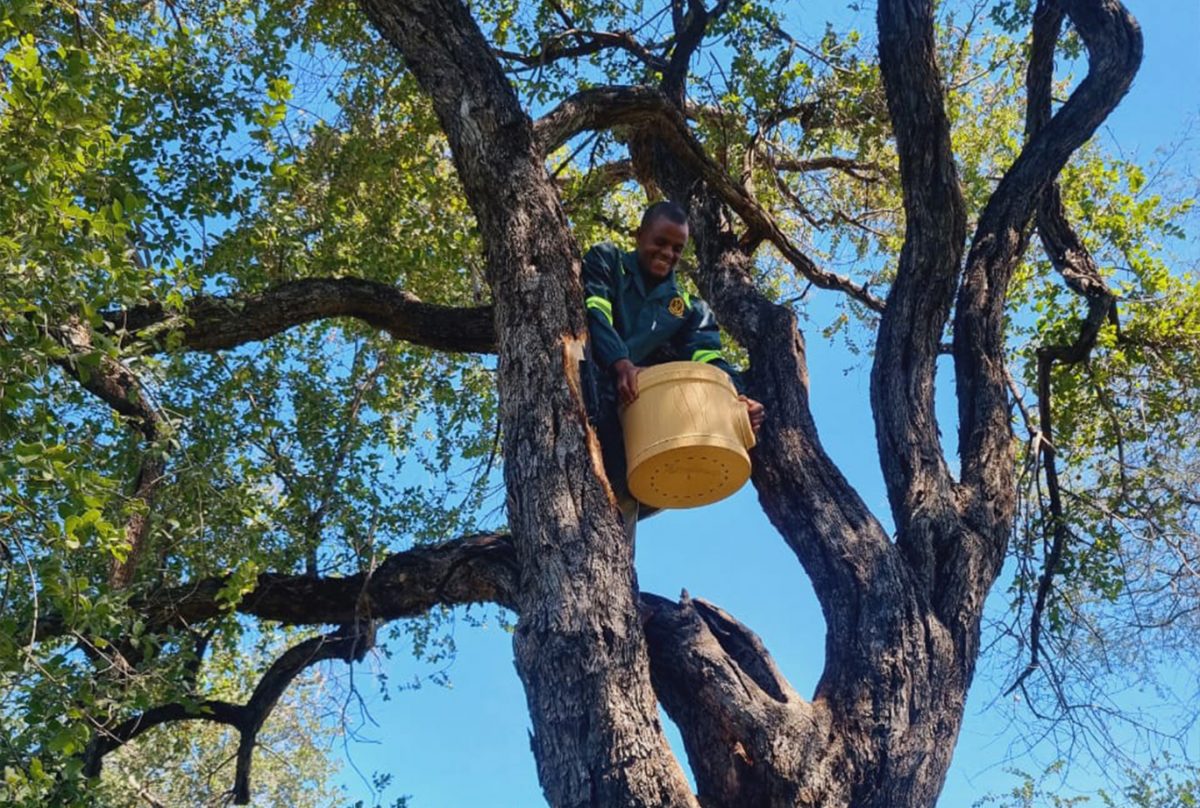
Australian designed and manufactured, Habitech beehives are being erected in trees in Africa to deter elephants from entering farmland. Photo: Habitat Innovation and Management.
Two regional NSW-based ecologists have combined ecology and technology to develop revolutionary modular nest boxes for Australian animals and, much to their surprise, their products are now helping to protect African elephants in Zimbabwe.
Carl Tippler and Mick Callan of Habitat Innovation and Management designed and developed Habitech Nest Boxes which have been distributed across Australia to save a host of endangered species including birds, gliders, microbats and possums.
Their innovative operation caught the attention of environmentalists around the world, with the pair now sending their products as far as California in the United States, as well as Zimbabwe.
Working in partnership with the International Fund for Animal Welfare (IFAW), the Habitat Innovation and Management team developed a native beehive that is being trialled on the boundary of Hwange National Park to deter elephants from leaving the park and foraging in neighbouring farmland.
Carl said African elephants were frightened of the native bees, so it was hoped a barrier of hives would prevent crop damage and reduce conflict between farmers and elephants.
“It’s amazing that elephants are scared of bees, but they won’t go near the beehives,” he said.
“It’s hoped, by creating a perimeter of hives around the forests, it will stop the elephants from entering the conflict zones.”
After having huge success with their modular bird and possum nest boxes throughout Australia, the Habitat Innovation and Management team is also gearing up to release a range of nest boxes to suit larger birds including forest owls, gang-gang and glossy black cockatoos.
They’re also launching a cleverly designed quoll den, which will not only provide habitat for quolls, but for a range of critters including birds, lizards and even fairy penguins.
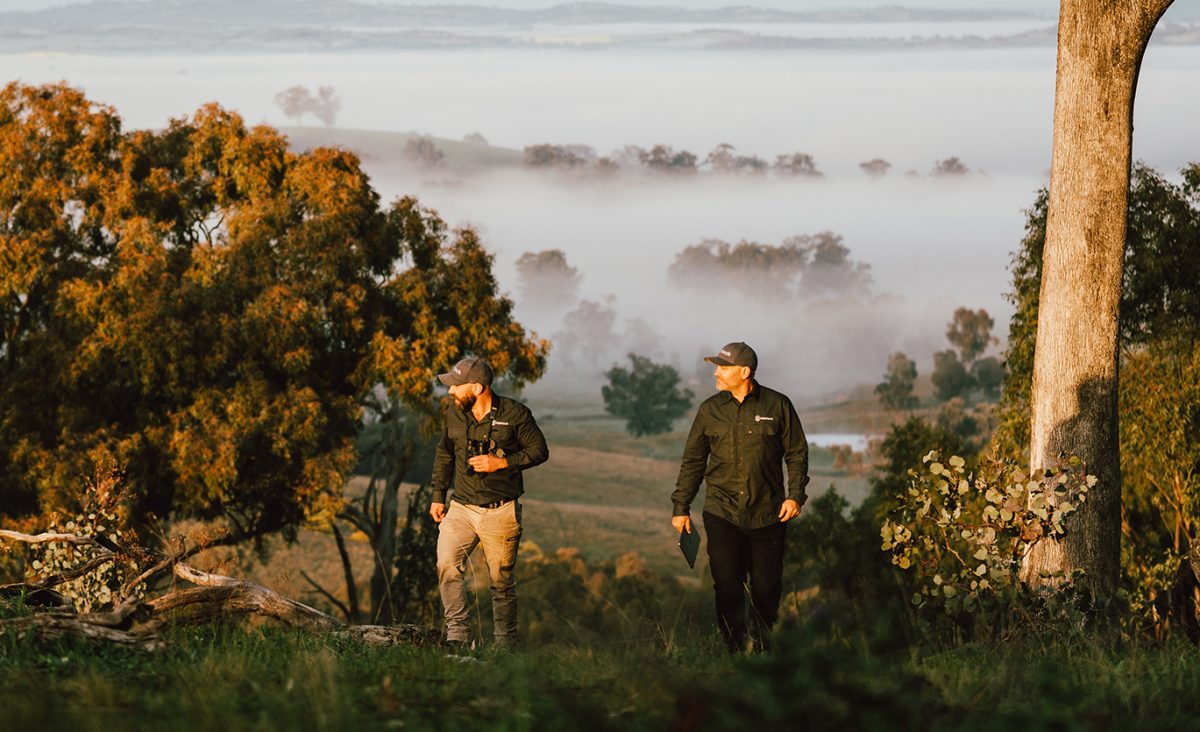
Ecologists Carl Tippler and Mick Callan seek out the best location for their species-specific nesting boxes. Photo: Habitat Innovation and Management.
Carl said the moulded plastic species-specific boxes and dens provided artificial habitats for native birds and animals that mimicked their natural environment. “We’re combining really detailed ecological science and engineering to solve quite a complex, but drastic problem in Australia,” he said.
“Urban development, land clearing and more recently catastrophic bushfires have drastically reduced the habitat of tree hollow dependent fauna, pushing many, such as greater gliders and glossy black cockatoos, closer to extinction.
“Once we lose these species from an area or from the landscape, that’s it, we’re never going to see them again. Extinction is forever.”
He said about 15 per cent of Australian animals relied on tree hollows at some stage in their lives, while gliders, possums, microbats and some bird species lived in hollows every night. About 30 per cent of birds require hollows to breed.
“It takes 80 to 100 years for a hollow to form in a tree, and 300 years for a hollow large enough to accommodate big cockatoos and forest owls,” Carl said.
“By providing alternate homes, essentially what we’re doing is filling a gap in time.”
Thousands of large old trees were destroyed when the Black Summer bushfires devastated parts of New South Wales and Victoria, making the Habitech boxes even more crucial for species survival.
“The fires were a real tipping point for many species,” Carl said.
“So many animals and birds were lost, and those that survived the fires were left without homes. That’s when we really saw the need for our nest boxes.”
The species-specific nest boxes have been installed in trees across the country, from residential gardens and forests to farmland, through private landholders, wildlife groups, local councils and even mining companies.
“We can install nest boxes anywhere they’re needed,” Carl explained.
“We try to match the species requirement with the location and the surrounding environment. It’s quite a defined science. We’re not just banging up a plywood box in a tree and hoping for the best.”

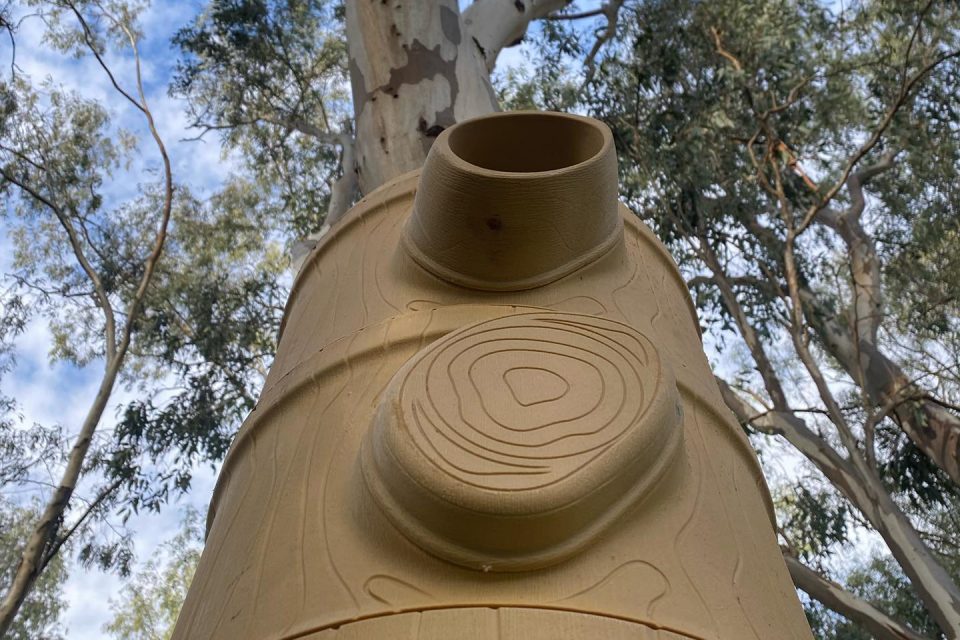



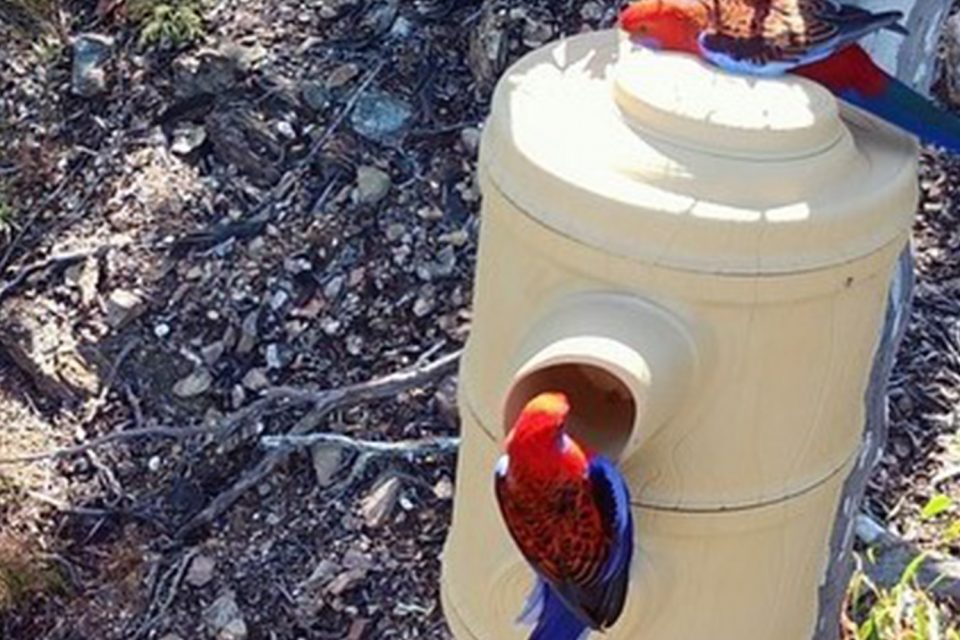
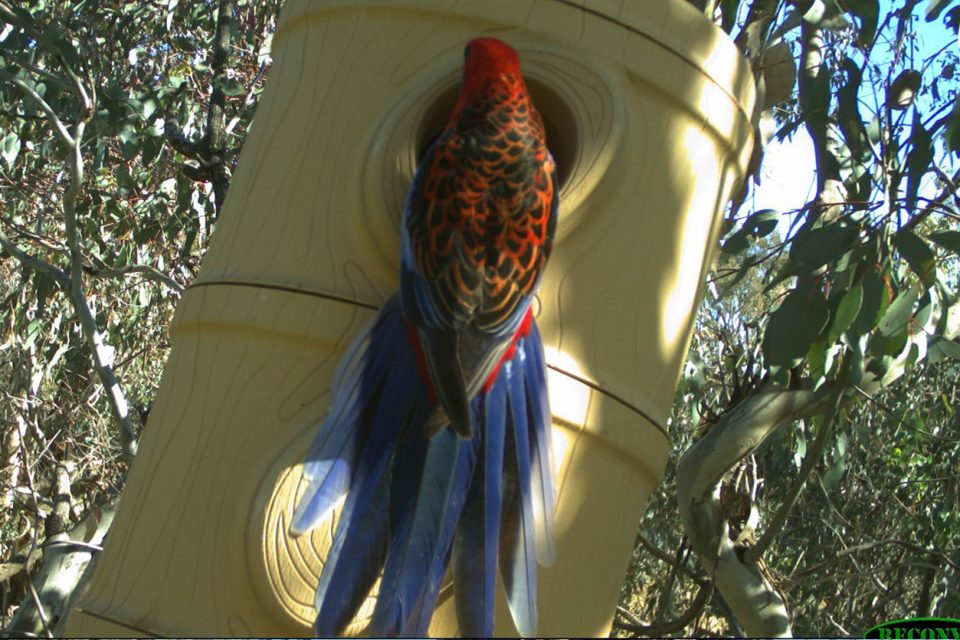
Habitat’s ecologists are experts in their trade. Mick is one of Australia’s leading experts in hollow dependent fauna and is a previous winner of Birdlife Australia’s Gavin Jackson Memorial Award for his outstanding contribution to ornithology.
Having worked on groundbreaking projects in urban biodiversity management, Carl is a former recipient of the NSW and Australian Urban Landcare Award and winner of the NSW and VIC Stormwater Association Award for Innovation.
Together the pair worked on the design and development of the Habitech nest boxes for about three years before launching their product which is the first genuine revolution in nest boxes since their invention centuries ago.
“The birds and animals are moving in really quickly. Sometimes on the first or second night,” Carl said.
“We have cameras monitoring many nest boxes and it’s great when you see the birds or possums coming in to check them out.”
The journey from concept to manufacturing was long and required investment so they decided to approach CBA Wagga Wagga’s regional and agribusiness banker Leigh Schneider who was keen to support a regional business that was “contributing to the greater good of the planet”.
“We got on board and helped them to be able to create their products within Australia,” Leigh said.
“It’s good to be able to support something that’s helping the planet, and we’re delighted to see businesses like this thriving in a regional area and having an impact on global supply.”
In addition to general banking products and services in lending, working capital and transactional needs, CBA Wagga Wagga also has agri-specific solutions including Australia’s first sustainability linked loan for agriculture and the industry-leading Agri Green Loan.
Original Article published by Katrina Condie on Region Riverina.







